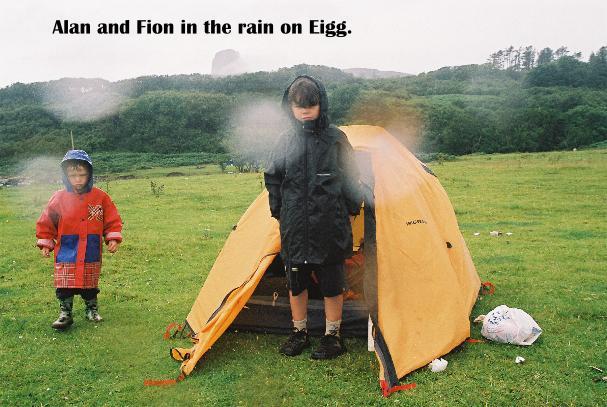This is a fictionalised account of the ‘Uamh Fhraing Massacre’ (the Massacre at St. Francis Cave) on the Isle of Eigg in the sixteenth century. I say ‘fictionalised’ because some new elements are introduced in order to bring to life this horrendous event in the history of the Isle of Eigg, or the history of Scotland for that matter.
I have quite a clear conscience in pursuing this endeavour, as the ‘original’ accounts cannot be considered as primary historical sources as they were written at least one century after the event (Urquhart & Ellington, 1987: 36).
I have sourced various secondary sources, which are listed in the bibliography. The main sources are:
- Scott, Walter. History of Scotland. (Tales of a Grandfather.) (Volume 2). Published between 1828-1830.
- Cooper, Derek. Road to the Isles. Routledge & Kegan Paul. London. 1979. (which includes excerpts from Wilson, James. A Voyage Round the Coasts of Scotland and the Isles (1842).
- Miller, H., The Cruise of the Betsey. Edinburgh 1858.
More recent secondary sources:
- Dressler, Camille. Eigg – The Story of an Island; Polygon; 2007.
Urquhart, Judy and Ellington, Eric; Eigg; 1987, Canongate.
Comment on the sources
The various accounts focus on the grisly details of the cave slaughter and the skeletons in the ‘massacre cave’, as this is perhaps what most appeals to the modern mind, which has an appetite for bestial Gothic details. There is often little censure of graphic violence, but more censure of graphic human sexual behaviour. Thus, British Victorian literature will often avoid graphic sexual behaviour and deviation.
Moreover, perhaps the most important description of the Eigg Cave Massacre was written by Sir Walter Scott for his grandson.1 He could not tell his grandson about the rape of the Eigg girls – thus, he uses the euphemism ‘molest.’ Of course, I am not sure of the exact meaning of the word in the early 1830s, but in modern English, it can mean “to pester someone”.2
Obviously, the MacDonalds didn’t murder the MacLeods for ‘pestering’ the Eigg girls. This idea of ‘molesting’ girls continued in more recent sources, such as Dressler (2007). This idea is, of course, misleading. The Eigg girls were obviously not ‘pestered’ but rather brutally raped – it is also relevant here that it is girls in plural; it was thus a mass rape.
Of course, this is nothing unusual. ‘Mass rape’ is one of the characteristics of modern and ancient wars. The Soviet Army that liberated Norway in 1945 is often viewed as something glorious by Russians and Norwegians. Other aspects of war are often conveniently ‘forgotten,’ such as the mass rape of two million German women by Soviet soldiers.3 Thus, in this fictionalised account, I have decided to call a spade a spade and not use euphemisms in order to gloss over past crimes by using such an ambiguous word as ‘molest.’4
Footnotes
- December 2021. Tales of a Grandfather is a series of books on the history of Scotland, written by Sir Walter Scott, who originally intended it for his grandson. The books were published between 1828 and 1830 by A & C Black. ↩︎
- Definitions from ‘Oxford Languages’. ↩︎
- https://english.alarabiya.net/features/2018/03/11/PICTURES-The-largest-mass-rape-in-history Read: 18 June 2022. ↩︎
- Euphemisms are still in fashion in 2023. Thus, Israel don’t plan to invade Gaza to murder thousands of civilians, including innocent women and children. The aim is to execute an ‘incursion’. Reported by the ‘objective’, ‘non-partisan’, news agency, CNN: https://edition.cnn.com/2023/10/12/middleeast/israel-ground-invasion-gaza-reservists-intl/index.html Read: 15 October 2023. ↩︎


